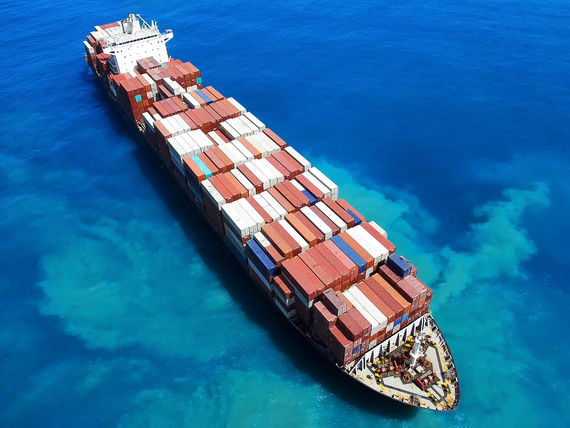Trendwatch: White House creates cabinet-level supply chain council; Durban warns it could take 15 weeks to clear backlog as 60 ships wait; How the US is leveraging its spending power to strengthen supply chains

White House creates cabinet-level supply chain council
-
President Joe Biden is creating a new cabinet-level council focused on supply chain issues, with the inaugural meeting happening today, according to the White House.
-
The Council on Supply Chain Resilience will convene nearly every member of the president’s cabinet, bringing together more than a dozen of the nation’s top federal officials directly involved in industrial policy. The council will be co-chaired by the National Security Advisor and National Economic Advisor.
-
The creation of the new council is one of nearly 30 actions the White House shared Monday as evidence of Biden’s focus on strengthening supply chains. The actions include funding announcements and updates on specific data and trade initiatives, among other topics.
Durban warns it could take 15 weeks to clear backlog as 60 ships wait
Port officials in South Africa are reporting it is likely to take until 2024 and possibly till February to clear the current congestion that has built up at the container port in Durban. Consistently at the bottom of port rankings for efficiency, Durban is facing a crisis with more than 60 vessels reportedly waiting offshore and importers now saying they will not have expected merchandise in time for Christmas.
“The problem of port congestion is a complex one and it is something that was due to happen at some point, as a result of many years of underinvestment in equipment and its maintenance,” Transnet operator of the large container terminal at Durban wrote in a statement attributed to Board Chairperson, Andile Sangqu. “We need to caution that this is going to take some time as the lead times for some of the equipment is anything from 12 to 18 months,” said Sangqu in a media briefing.
How the US is leveraging its spending power to strengthen supply chains
Susan Helper has spent much of her career investigating the hidden costs within supply chains.
Whether it was as a professor at Case Western Reserve University, the chief economist in the Department of Commerce or as an advisor to the Obama and Biden administrations, Helper has spent decades investigating how the public and private sector balance short-term goals with the need for supply chain resilience.
“It’s not like resilience has to cost more,” Helper said in an interview with Supply Chain Dive. “If we transform the system through agility, we can actually get more resilience and better outcomes for consumers, for workers and for firms.”
Quantifying Scope 3 emissions creates a roadmap for business longevity
The urgency companies are feeling to quantify and reduce their carbon emissions stems from more than government regulations — it's a matter of long-term business viability. Companies that cannot adapt to a low-carbon economy, and minimize the physical risks posed by climate change will not be competitive in the coming decades as we adjust to the low-carbon economy.
Investors, customers and business leaders are asking: What is an organization's transition risk, and how will the company mitigate vulnerabilities? Quantifying Scope 3 emissions is essential to answering these questions because it provides a comprehensive view of risk throughout an organization's value chain.
Lower CO2 emissions are partially due to shifts in power generation sources
We forecast the U.S. energy sector to emit about 4,790 million metric tons of carbon dioxide (CO2) in 2023, a 3% decrease from 2022. Much of this decline results from lower electricity generation from coal-fired power plants due to higher generation from renewable sources such as solar power. We expect this trend to continue into 2024, with CO2 emissions declining 1% relative to 2023.
Almost half of U.S. CO2 emissions result from petroleum consumption, primarily by the transportation sector. In 2023, we estimate that petroleum emissions will remain relatively unchanged, with rising jet fuel consumption offsetting falling gasoline consumption.
Global goods trade rebounds on demand for cars, WTO says
Global goods trade is recovering from a recent slump amid stronger demand for autos and electronics, the World Trade Organization said in a report that warned geopolitical strains are making the short-term outlook “highly uncertain.”
The WTO’s periodic goods barometer rose to 100.7 from the previous reading of 99.1 announced in August, the Geneva-based organization said in a report Monday. The baseline of 100 indicates growth over the next quarter that’s in line with medium-term trends.
Transportation for America applauds long-awaited USDOT GHG rule
Last Wednesday (11/22), the Biden Administration released the U.S. Department of Transportation’s greenhouse gas (GHG) rule. The rule requires all 50 states, as well as the District of Columbia and Puerto Rico, to track greenhouse gas emissions associated with travel on the parts of the National Highway System that lie within their boundaries and sets a unified standard for reporting emissions.
Transportation is the leading contributor to GHG emissions in the U.S. and the performance measure is an important first step to advance climate goals by bringing sunlight to states’ progress on emissions targets, allowing states and MPOs to better align their work with climate goals, and demonstrating to policymakers and taxpayers what they are getting for their transportation investments.


